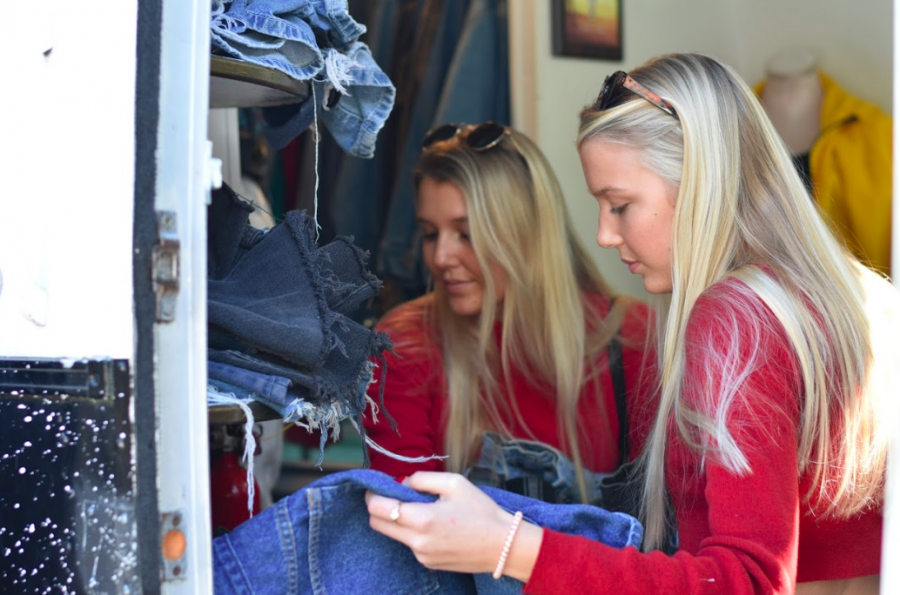Education
February 1, 2019
Junior Lila Mack and sister Allie Mack shop at Red Rose Vintage on Jan. 26 for denim shorts before grabbing a bite to eat at the nearby cafe.
One of the most difficult parts of the sustainable fashion movements is the transition.
Consumers are accustomed to purchasing the $4.99 T-shirt, wearing it three times before the seams break, tossing it out and repurchasing that shirt. However, they are mostly unaware of the detriments of this cycle, Treptow-Kovacs said.
Purchasing the $16 T-shirt from a store like Everlane is 320% of the other price however it allows for a long-lasting T-shirt.
“We are very want-driven. You see something online, and you want it yesterday…” Barron said. “It is a hard problem to solve because mentality wise, it goes against our thought process to buy something that is a little more expensive.”
Educators, like Treptow-Kovacs, are engaging their students in activities and lessons that promote sustainable fashion, but beyond the classroom, education is lacking on this topic.
“That is one of the biggest issues today in the industry is that we don’t know where anything is coming from. If you ask a child where milk comes from, they will tell you the grocery store. They are not seeing the process… Education is key,” Treptow-Kovacs said. “When you have an educated market, they make wiser choices.”
As much as companies are responsible for sponsoring sustainable initiatives, through education, now the responsibility lies on the backs of the consumer.
“But I think as more and more comes out about fast fashion, I think more people realize that we have to take it upon ourselves to fix the problem,” Barron said. “We can’t expect companies to solve the problem, when we continue to purchase fast fashion… It is on the consumer.”
